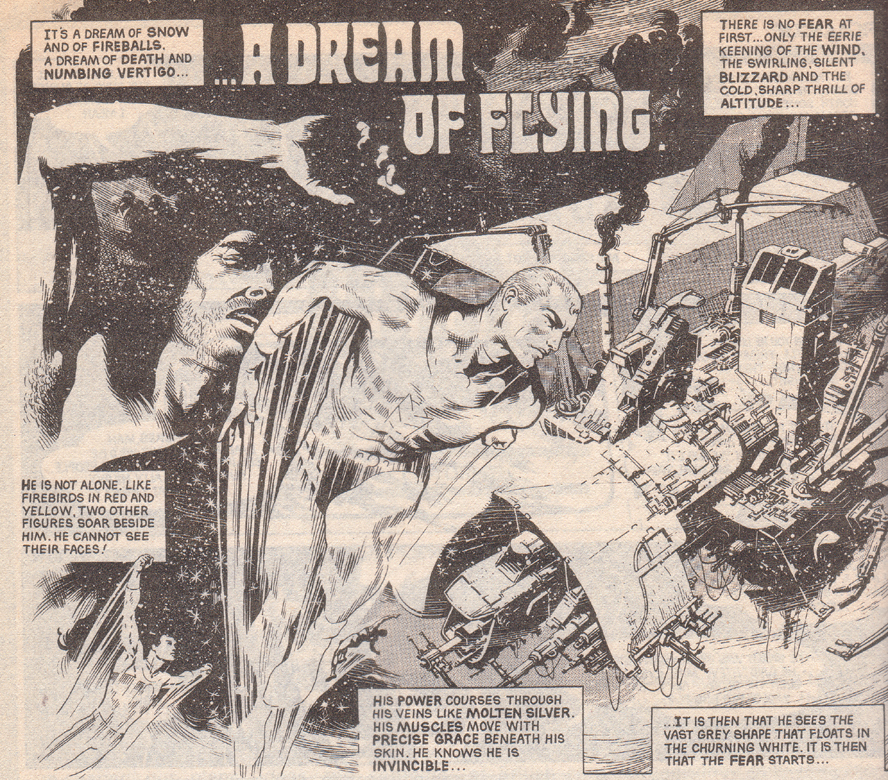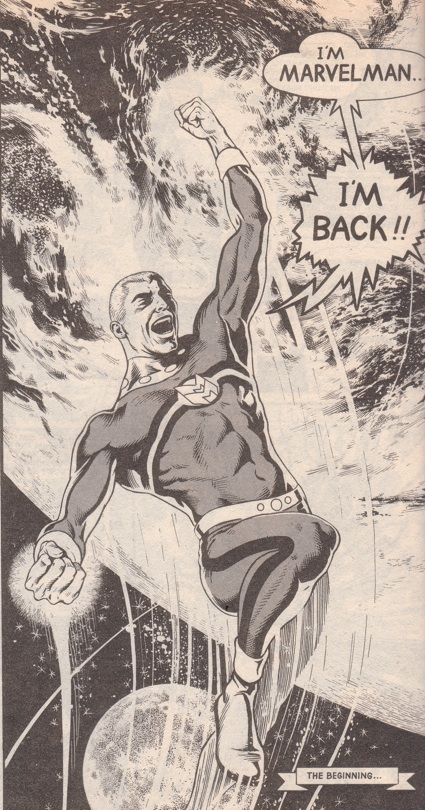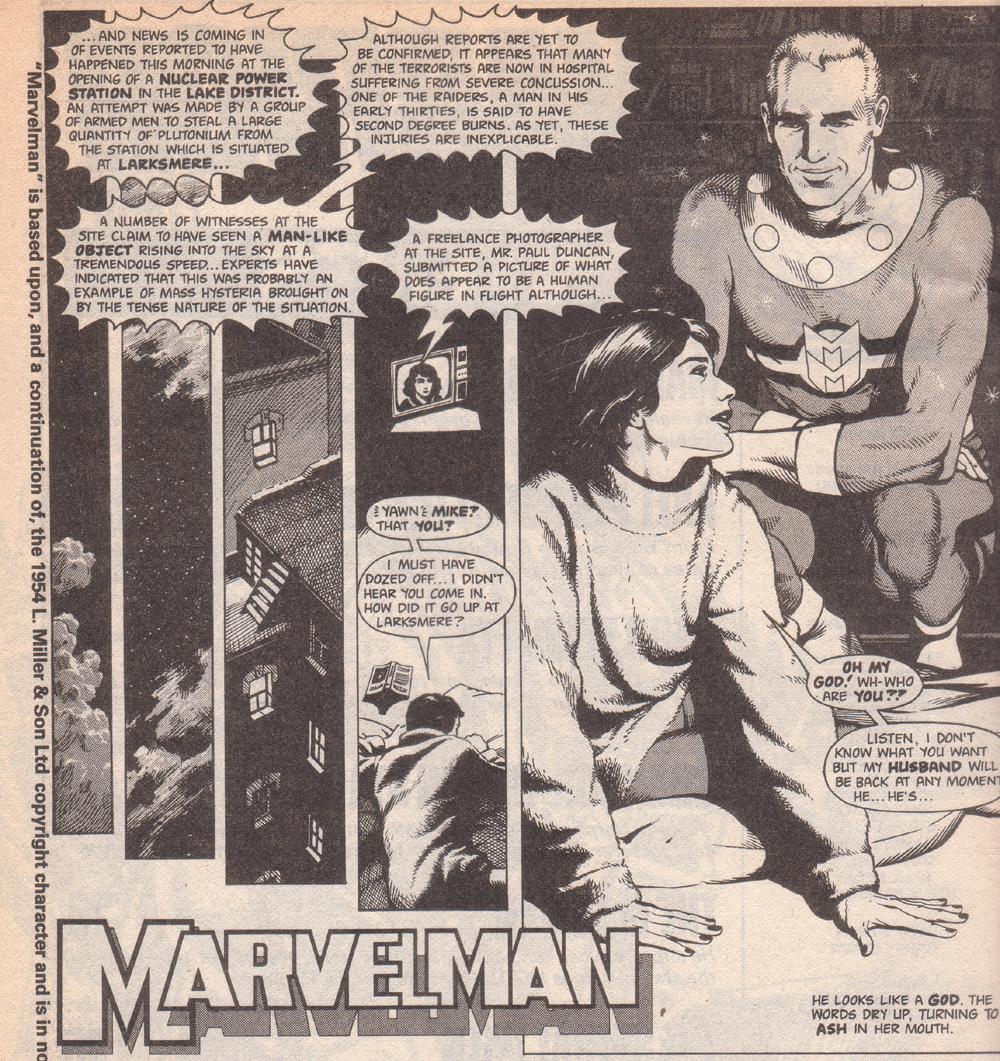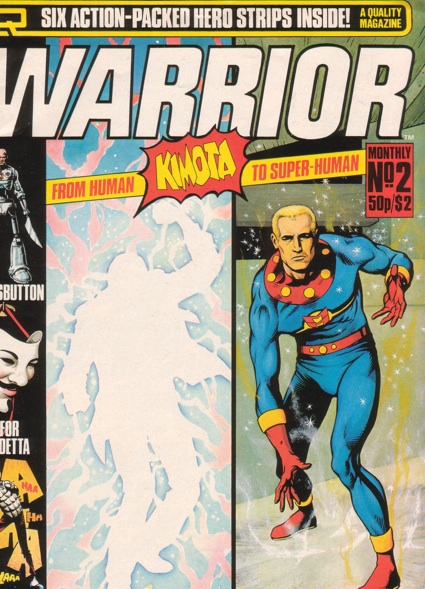Back in 1981, fate played a major hand in the comeback of a dormant British comic book superhero character named Marvelman. Former Marvel UK editor Dez Skinn was tired of doing all the heavy editorial lifting for others when he decided to branch out and start a new company called Quality Communications. With his rolodex and publishing experience, he took a chance on himself and started Warrior, a comics anthology magazine that somewhat followed the content tempo of Marvel UK’s comic magazine format.
But, more importantly, Quality shared copyright ownership with its young pool of British creators. As Warrior was revving up, Skinn began to entertain the idea that it would be beneficial for the magazine to have a known character featured within. In his eyes, there was no better character than “the only British comic superhero,” rebuilt and modernized for an audience only vaguely familiar with the name from comics lore. The bigger question then became: Who would helm this revival?
Around this time, an up and coming writer named Alan Moore was just beginning to make some waves on the UK comics scene with his short stories for 2000AD, the leading British comics anthology. But it was within their May 1981 newsletter that the Society of Strip Illustrators (a one-time organization for British comics creators) asked a group of writers about their comics goals and aspirations. Moore answered the questionnaire by expressing his wish for the maturation of comics storytelling, and with a call for more autonomy for its creators. But he cleverly closed his statement with the following thought, “My greatest personal hope is that someone will revive Marvelman and I’ll get to write it. KIMOTA!”

Whether it was via writer Steve Moore’s (a mutual acquaintance) recommendation, or Skinn reading that newsletter himself, Alan Moore was given the opportunity to pitch his spec for the character. Upon reading the story, Skinn was so impressed with the excellent substance, style and voice of that script that he knew immediately he had found his Marvelman writer. Moore’s vision was to modernize the character and ground him dramatically in reality. This would be his first long-form comics opus, a revisionist superheroic take that was bold and experimental.
About the genesis for his take on Marvelman, Moore explained to me that what sparked his treatment was the classic Mad strip titled “Superduperman” (in issue #4), written by the legendary Harvey Kurtzman and illustrated by the incomparable Wally Wood. Moore said, “The way that Harvey Kurtzman used to make his superhero parodies so funny was to take a superhero and then apply sort of real world logic to a kind of inherently absurd superhero situation, and that was what made his stuff so funny. It struck me that if you just turn the dial to the same degree in the other direction by applying real life logic to a superhero, you could make something that was very funny, but you could also, with a turn of the screw, make something that was quite startling, sort of dramatic and powerful… I could see possibilities there that didn’t seem as if they had been explored with any of the other superheroes around at that time.”
Even in 1981, the question of who actually owned the rights to the original Marvelman was a bit of pickle. Len Miller and Son (the original publisher of the Marvelman empire and apparent copyright holder) was no more. Publisher Dez Skinn got in touch with Marvelman creator Mick Anglo about his intentions to revive the character—because he intended to make the original 1950s material cannon to the revival, and even reprint some of the old Anglo Studio output. Anglo remembered, “He (Dez) contacted me and he wanted to revive it, and I said go ahead and do what you like as far as I was concerned.”

When Warrior made its debut in March of 1982, Marvelman’s return was just as an abstruse figure on the cover. Alongside Moore and David Lloyd’s “V For Vendetta” (another strip in the anthology), the readers responded enthusiastically to the realistic Marvelman revision and the artistic tour de force of Garry Leach, who redesigned the character and illustrated the initial chapters—subsequent stories would be illustrated by the talents of Alan Davis and John Ridgway. The superhero quickly became the magazine’s anchor. But the output of Marvelman stories ceased with issue #21, after a falling out between Moore and artist Alan Davis—the story came to a sudden halt midway into the second storyline, now known as “The Red King Syndrome.” For Alan Moore, his work for Warrior cemented his career and led to DC Comics offering him the keys to Swamp Thing, and the rest, as they say, is history.

Warrior, in the meantime, despite winning critical and fan acclaim—and despite the camaraderie and independent spirit amongst the book’s creators—came to an end. After twenty-six issues, the magazine could financially endure no more. Sales had never been such to make it a viable force, and despite being shareholders of the rights to their stories, the creators of these works could not survive on the low page rates that the magazine offered, said to be significantly lower than its competitors.
Another tougher obstacle that Warrior faced was an intimidating “cease and desist” letter from a British law firm on behalf of their client, Marvel Comics. Basically, Marvel felt that the name “Marvelman” infringed on their company’s trademark—never mind the fact that Marvelman first bore the name back in the Fifties, when Marvel Comics was called Atlas Comics. This last bit of revisionist history served to only thicken the plot for Marvelman’s fate in the UK. Luckily, Dez Skinn was already hard at work on bringing Marvelman and other Warrior strips to America, the land where everyone gets a second chance!
Tune in next time for “Miracleman: Apocalypse Please”
George Khoury is the author of the upcoming brand-new edition of Kimota!: The Miracleman Companion: The Definitive Edition










